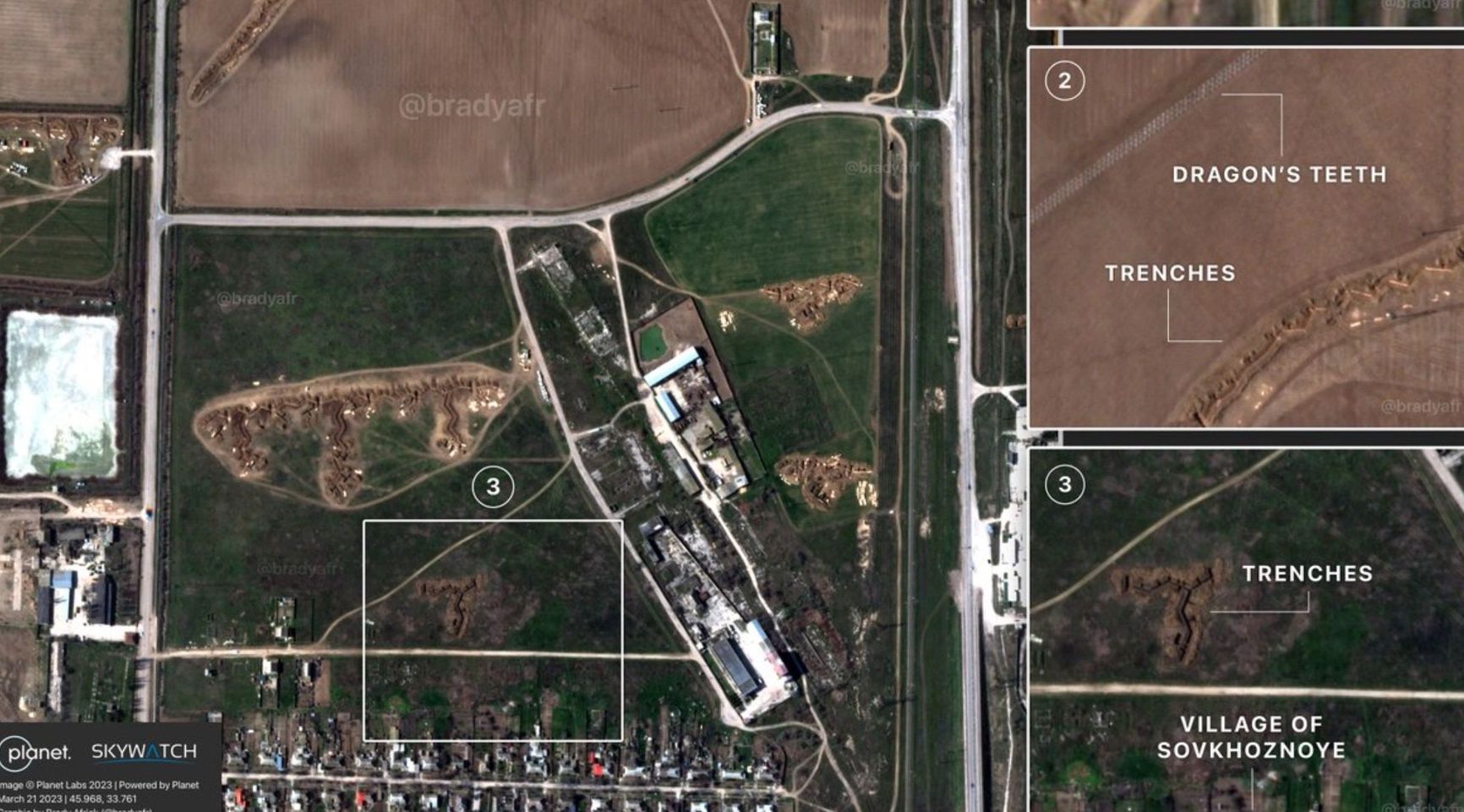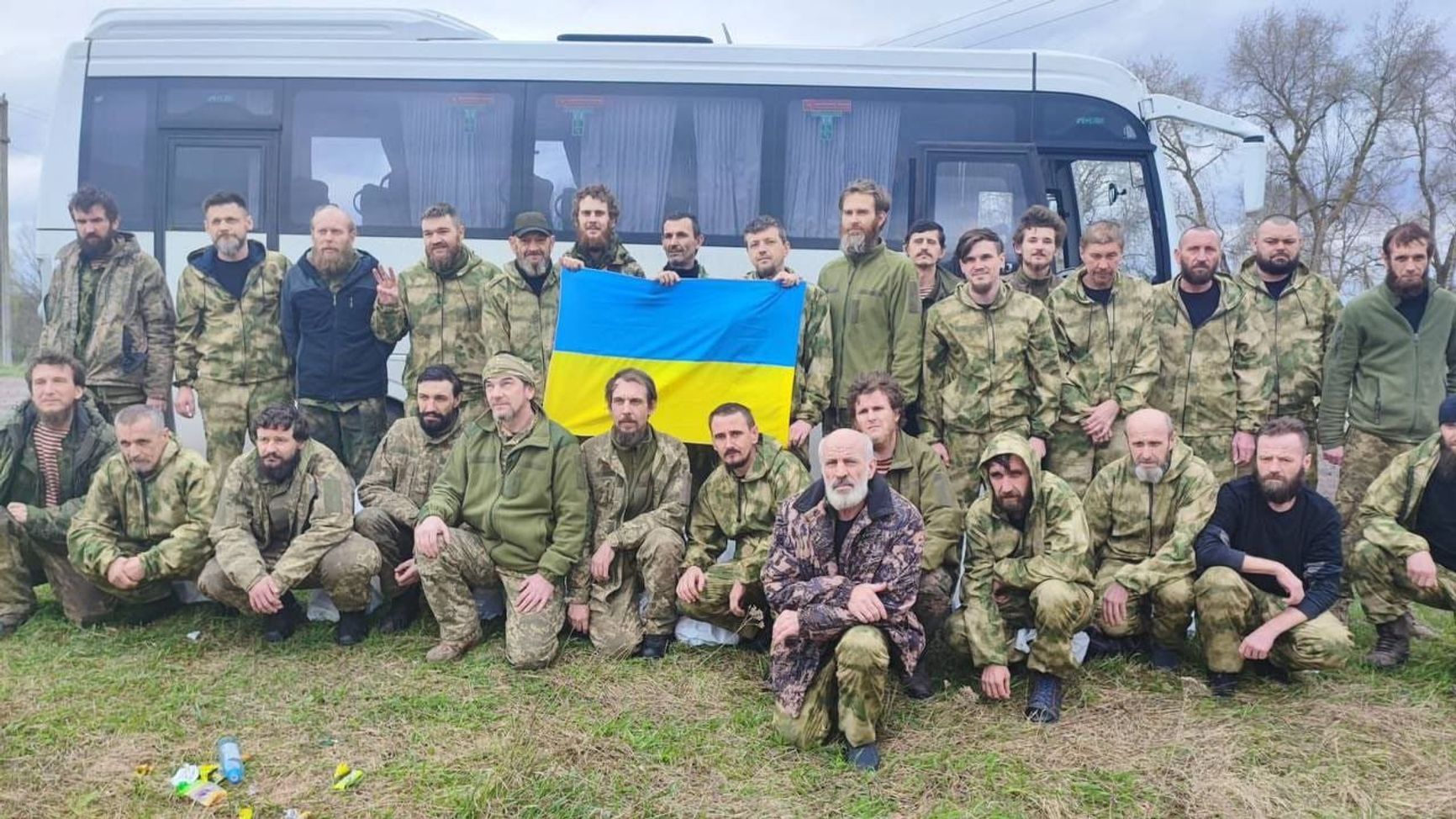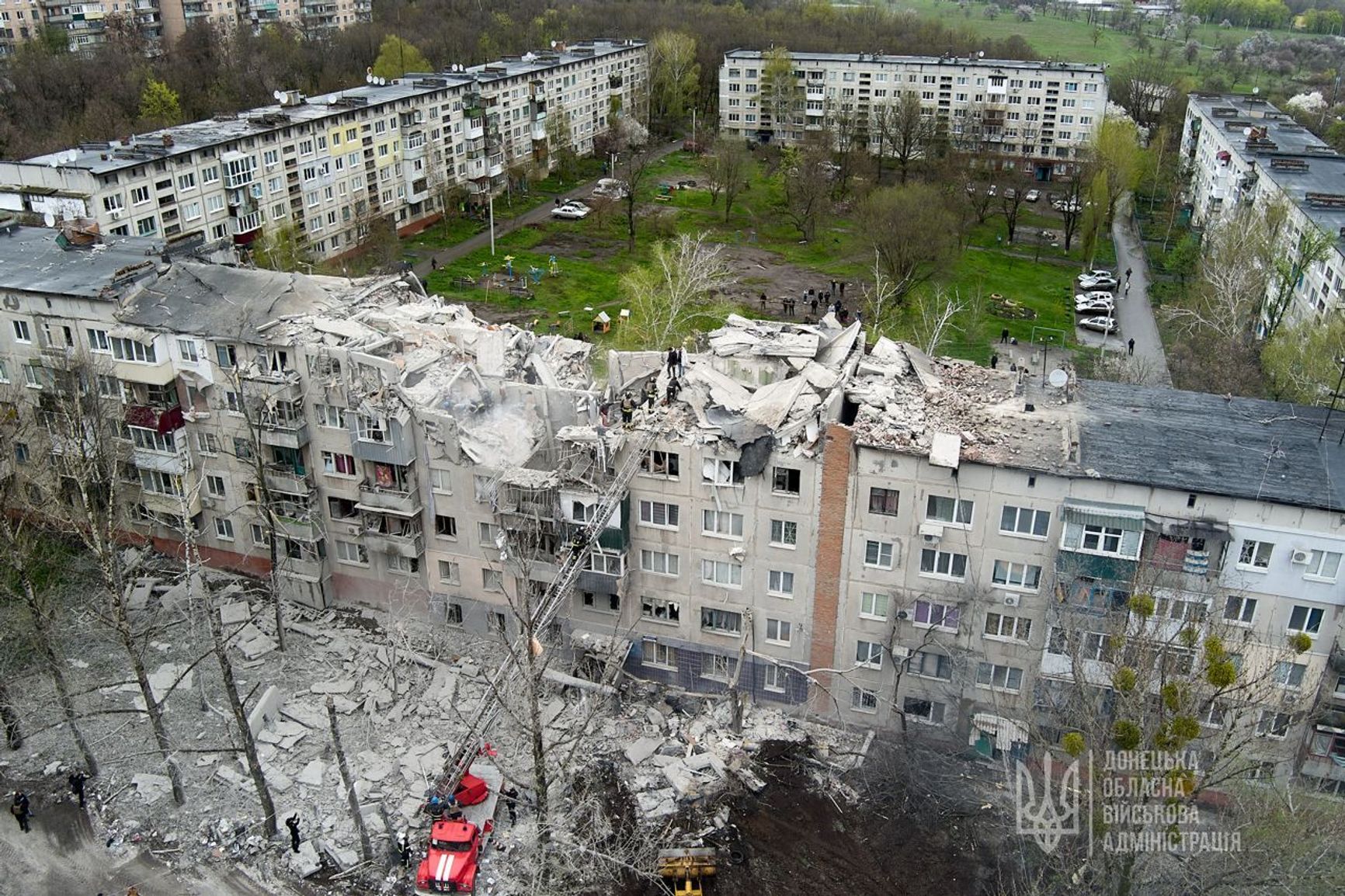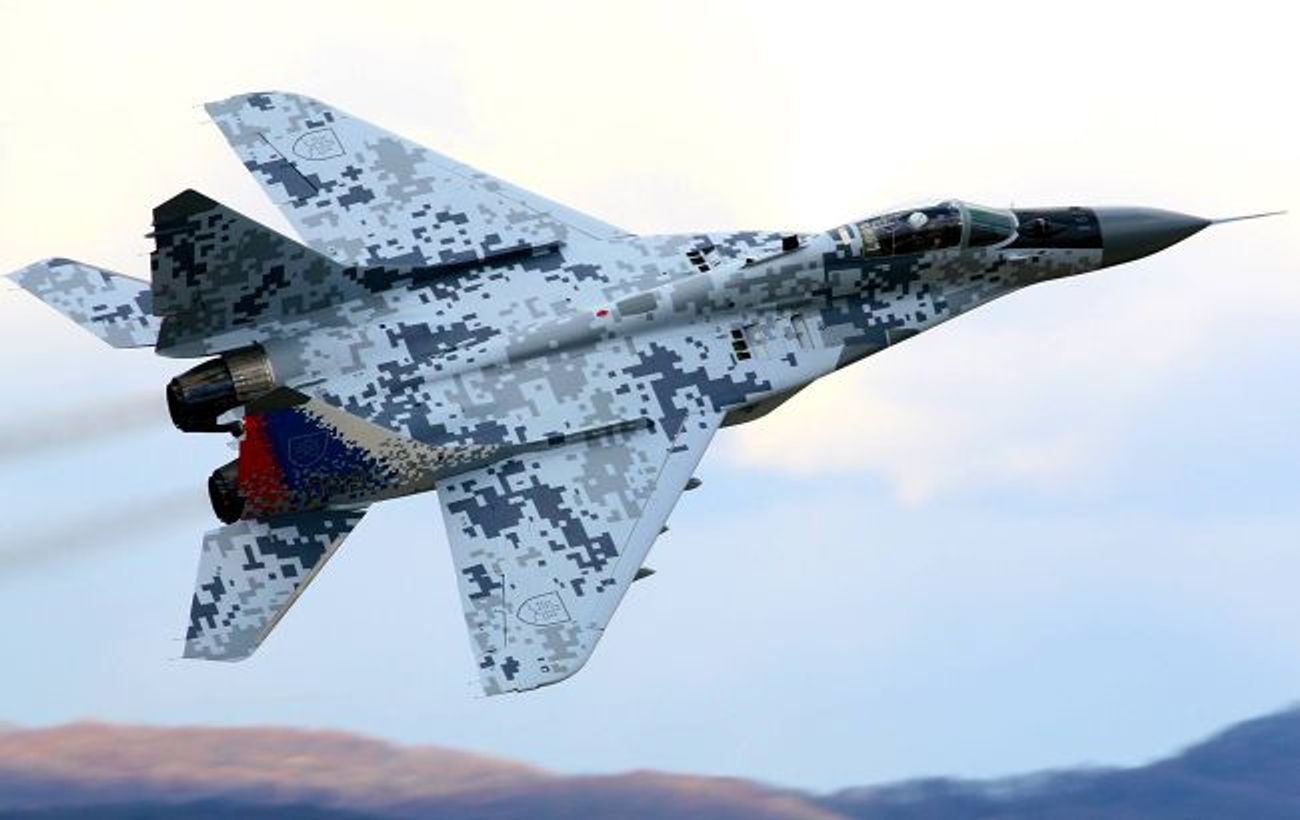
In today's summary:
- There are two hotspots on the front line – Bakhmut and Avdiivka. Convicted war criminal and former “DPR” defense minister Igor Strelkov (Girkin) writes that Russian forces are suffering serious losses;
- 750,000 Russians will become “special military operation veterans,” with nearly 16,000 veterans officially to be considered disabled, according to an estimate by the government-run fund “Defenders of the Fatherland,” headed by Putin's cousin's daughter Anna Tsivileva;
- Andriy Yermak, head of the Ukrainian Presidential Office, reported the return of 130 Ukrainians during an Easter prisoner exchange;
- Mobilized soldiers from the Moscow and Ivanovo regions have recorded a video message complaining that they had been illegally taken from Russia’s Rostov-on-Don to Ukraine’s Luhansk and had their military IDs confiscated. The video was published by the Astra Telegram channel ;
- A trial distribution of electronic conscription notices via Gosuslugi, Russia’s state services portal, and text messages, will begin during the spring draft, announced Military Commissar of Moscow Maxim Loktev;
- The death toll from the shelling of Sloviansk has risen to 15. A total of 34 high-rise buildings, 20 private houses, civilian infrastructure and 12 cars were damaged;
- Slovakia has completed the transfer of 13 MiG-29 fighter jets to Ukraine: four were transferred back in March, and the remaining nine are being delivered now.
The front line
Pro-Kremlin Komsomolskaya Pravda's military correspondent Alexander Kots posted a video from the northern flank of Russian positions near Bakhmut, which, according to him, is covered by paratroopers of the 106th Airborne Division (the war correspondent, like the Russian Armed Forces, calls the town by its Soviet-era name “Artemovsk”). According to Kotz, the Russian troops now have a strong line of defense, as they are located in an advantageous area on a hillside.
“There's a field between us – they won't go over it. If the infantry moves, we will mow them down. They'll go by vehicles, we'll grill them with these things [pats an ATGM]. We understand that they can hit the flank of the ‘musicians,’ [e.g. Wagner PMC] we'll defend them with all our strength – both the possible and impossible.”
Igor Girkin (Strelkov), the former “defense minister” of the so-called “DPR,” who actively covers the situation on the front line, claims that there are now two main hot spots in Ukraine. According to him, fierce street battles continue in Bakhmut, with the AFU slowly being driven out of the western part of the city, while the Wagner PMC is being “propped up” by army units and mobilized troops. Without the latter, Wagner troops are not able to cope due to serious losses. The second hotspot is Avdiivka, claims Girkin. He writes that attacks in this direction are now being carried out without artillery preparation fire, as the Russian army lacks shells and armored vehicles.
Russian forces are adapting at the strategic, tactical, and operational levels during the war with Ukraine, opined retired Australian Army Major General and CSIS researcher Mick Ryan. According to Ryan, contrary to stereotypes established during the war, Russian troops have demonstrated the ability to learn and adapt in some areas.
In particular, the Russian military has changed its tactics in close combat: at the beginning of the full-scale invasion, it tried to carry out large-scale combined arms maneuvers, but Ukraine was able to attack its supply routes – an attempt by Russian troops to make a crossing of the Siversky Donets is an example of one of these maneuvers, Ryan wrote. After that, the Russian military adapted, as evidenced by the withdrawal of troops from Kherson in October and November 2022, as well as the deployment of a group of mercenaries from the Wagner PMC in 2022, particularly in the Bakhmut area. Russian troops also created defensive lines in eastern and southern Ukraine – Ryan noted that he had spoken of the usefulness of defensive belts and zones at the tactical and operational level back in November 2022.

In a conversation with The Insider, defense expert Oleksandr Kovalenko said that it should take up to 5-6 months for the Armed Forces of Ukraine (AFU) to counterattack based on last year’s experience. In his assessment, Ukrainian troops need three counterattacks to fully liberate Ukraine’s occupied territories. The expert suggested that the fighting will continue in 2024 – the same year the war could potentially end. The following year could prove decisive in putting an end to combat operations in all areas, Kovalenko added.
“If we talk about Western support for Ukraine, in addition to those aspects that are being handled inline with the reserve resources, we’ll move into a period when we need to use the zero-production cycle – that is, to use resources that are produced here and now, such as ammunition. That support is essential.”
The expert also disagreed with Mick Ryan’s assessment that the Russian army is adapting on operational, tactical and strategic levels simultaneously. For example, the Russian army still has a number of unresolved general issues, such as logistics, the supply of troops, forward units and command&control systems for these units, Kovalenko noted. All this has remained unchanged since the full-scale invasion of Ukraine first began, he added.
“Even relatively recently in the Marinka area, we observed a large gathering of Russian tank units, and their combat formation was made up of a classic pattern – a consequence of the lack of appropriate capabilities in their command&control system. If there had been an M-142 HIMARS somewhere nearby at the time, there would have been little left of this cluster of tanks, so they were lucky. And the offensive towards Vuhledar in late January and early February, which failed, only confirms that they don't change anything tactically, and make the same mistakes – starting with the columns they used to advance and burn in Ukrainian cities, for example, in Bucha, and along the highways in the Kyiv and Chernihiv regions. They also forded the Siversky Donets and essentially lost a battalion-tactical group in one day. We are now witnessing something similar in other directions.”
According to Kovalenko, the resources of the Russian army are being depleted, and the Russian Armed Forces continue to withdraw old Soviet equipment, such as retired T-54 and T-55 tanks, from storage.
NATO changes strategy
NATO has been preparing for potential hostilities on its borders since the start of Russia’s full-scale invasion of Ukraine, wrote The New York Times, citing current and former alliance officials with knowledge of the matter. NATO has replaced the “deterrence by retaliation” strategy that prevailed during the Cold War with “deterrence by denial.” The latter means more troops on the border with Russia, deeper integration of US and allied military plans, increased military spending, and more detailed requirements for allies to have specific kinds of forces and equipment to fight.
On April 4, Finland officially became the 31st member state of NATO, increasing the total length of Russia's land border with NATO states from 1,215 km (with Poland, Lithuania, Latvia, Estonia and Norway) to 1,300 km with Finland alone, more than doubling the previous amount. Finland, together with Sweden, applied to join NATO following the start of Russia’s full-scale invasion of Ukraine. Sweden's accession to NATO is still being hindered by Turkey.

750,000 Russians to become “‘special military operation’ veterans”
At least 750,000 Russians are slated to take part in the invasion of Ukraine, according to an estimate by the government-run fund “Defenders of the Fatherland,” headed by Russian President Vladimir Putin's cousin's daughter Anna Tsivileva. These figures were cited in a presentation intended for official use, revealed media project We Can Explain (“Mozhem Obyasnit”). The authors of the report also estimated that almost 16,000 veterans will be officially considered disabled. As of February 1, more than 72,000 people had received the status of “‘special military operation’ veteran,” and over 1,500 soldiers returned from the front line with disabilities.
After 14 months of war with Ukraine, there will be more veterans in Russia than after 10 years of the Soviet-Afghan War and 12 years of both Chechen wars. According to the BBC, as of April, the names of at least 20,451 Russian servicemen who died in the war in Ukraine have been confirmed. The biggest casualties were suffered by Wagner Group prisoners-turned-mercenaries fighting in the Bakhmut area.
Easter prisoner exchange
A large Easter prisoner exchange took place on April 16, with the Head of the Office of the President of Ukraine, Andriy Yermak, reporting the return of 130 Ukrainians:
“Easter. Hope is the quintessence of the holiday. This is exactly what the prisoners' relatives felt having waited for so long.”

The press service of the head of the Wagner PMC, Yevgeny Prigozhin, also published a video showing prisoners of war returning to Ukraine on the eve of Easter. In the video, Prigozhin addresses a soldier with a concealed face and gives instructions to prepare and feed the soldiers, as well as to examine the wounded. The soldiers are then seen ordered to board a truck. At the end of the video, the soldiers walk in formation, some of them being carried on stretchers.
Mobilized Russian soldiers record video appeal
A group of mobilized soldiers from the Moscow and Ivanovo regions recorded a video appeal complaining that they were illegally taken from Russia’s Rostov-on-Don to Ukraine’s Luhansk, and had their military IDs confiscated. The video was published by the Telegram channel Astra.
“We, the servicemen of units 11048 and 61899 from the field camp ‘Postoyalye dvory’ (Kursk region) were sent, according to Lieutenant Colonel Maetsky and Colonel Ermak, towards Crimea – to be transferred to the Southern Military District. We were not shown combat orders, and no officers were with us. We then arrived in Rostov at the 136th Motorized Rifle Brigade, where only conscripts serve, where our military IDs were confiscated to record our transfer, and we were told that they would return them within one day. Five days have passed since those words were said, and the papers have still not been returned <...>.
Many of us are incapable of performing military service, and have been assigned to category ‘D.’ [a category indicating that the soldier is temporarily unfit for service – The Insider] These people cannot perform combat missions. Many of us need medical care, which we can't get here in the field. The people who accommodated us here, I won't name them, but they’ve been helping us, and we thank them.”
Relatives of the soldiers told the media outlet that the video shows part of a group of 500 conscripts who were sent by three cargo planes from Kursk to Rostov-on-Don on April 5 for “training and transfer to a local military unit.” However, at night, the men were taken to the Luhansk region, where they were separated into different groups. One of the groups of soldiers recorded the video message.
A Ukrainian military officer tweeting under the username Tatarigami suggested that the situation with the mobilized men is potentially related to the activities of the new “Wolves” (“Volki”) Private Military Company (PMC), which, according to him, is active in the Bakhmut area. The user drew attention to the statement of a “Wagner analyst” claiming that the PMC had begun to voluntarily enroll the mobilized, and added that, according to the video appeals, they in fact refused to sign contracts. It is possible that the new PMC, created as a “subsidiary” of the Wagner Group, is intended for incorporating mobilized or other servicemen, who join the ranks of the mercenaries in one way or another.
Electronic conscription notices handed out due to lack of human resources
A trial distribution of electronic conscription notices via Gosuslugi, Russia’s state services portal, and text messages, will begin during the spring draft (from April 1 to July 15), announced Moscow Military Commissar Maxim Loktev. However, Russia’s state-run news agency TASS later issued a clarification – Loktev added that the test mailing of the e-notices will only be possible “after the adoption of a decree by the Russian government.” Before the adoption of the recent draft overhaul law, Chairman of the Duma Defense Committee, Andrei Kartapolov, claimed that the amendments on electronic notices will not apply to the spring draft.
Electronic conscription notices will be sent out in a rigid and repressive mode, and the authorities will demand fulfillment of the law on a mandatory basis, which indicates the lack of human resources to “cover the entire range of combat operations,” commented defense expert Oleksandr Kovalenko.
“Even if we talk about Bakhmut – it’s worth noting here. The Wagner PMC has already occupied most of the city, and [Russian] paratrooper units are also there. Units of the 98th Airborne Division, which was located to the north, in the location of Kreminna, are being pulled into Bakhmut. Some of its units are being pulled back to Bakhmut as there are not enough resources. Some units from the 20th division’s rear are also being pulled to Bakhmut from Avdiivka.
This all speaks of the lack of human resources and the plans of the Russian command to compensate for it in one way or another through repressive mobilization methods, which they are experimenting with. How long will this recruitment regimen last, given that they can’t even plug the holes within an offensive on a small town? After all, Bakhmut is a small town, and we are talking about colossal territories of tens of thousands of square kilometers, which means that the volume of forces and means that the Russian army has at the moment is not enough for mounting offensives throughout a territory [of that size]. What we are witnessing now is that the Russian army is demilitarizing itself.”
Death toll during shelling of Sloviansk rises to 15
On April 14, Sloviansk was subjected to a Russian missile strike – likely from S-300 units. Pavlo Kyrylenko, head of the Donetsk Regional Military Administration (OVA), confirmed that a total of 15 people were killed in the attack and 24 others were wounded.

A total of 34 multi-story buildings, 20 private homes, civilian infrastructure and 12 cars were damaged as a result of the shelling, said Ukraine’s Interior Ministry. The Regional Military Administration specified that the Russian army fired seven S-300 missiles at the city, six of which hit residential buildings and one exploded in a landscaped park.
Arms supplies to Ukraine
Slovakia has completed the transfer of 13 MiG-29 fighter jets to Ukraine – four were transferred back in March, and the remaining nine are being delivered now, tweeted Slovakia's Defense Minister Jaroslav Nagy.

The AFU is already using several dozen 155-mm M109L self-propelled howitzers, transferred by Italy, at the front line, reported La Repubblica citing sources with knowledge of the matter. Italy has committed to the supply of 60 M109Ls, and close to 30 of these howitzers may already be in the possession of the AFU. A video captured the howitzers being shipped from a railway station in Udine.